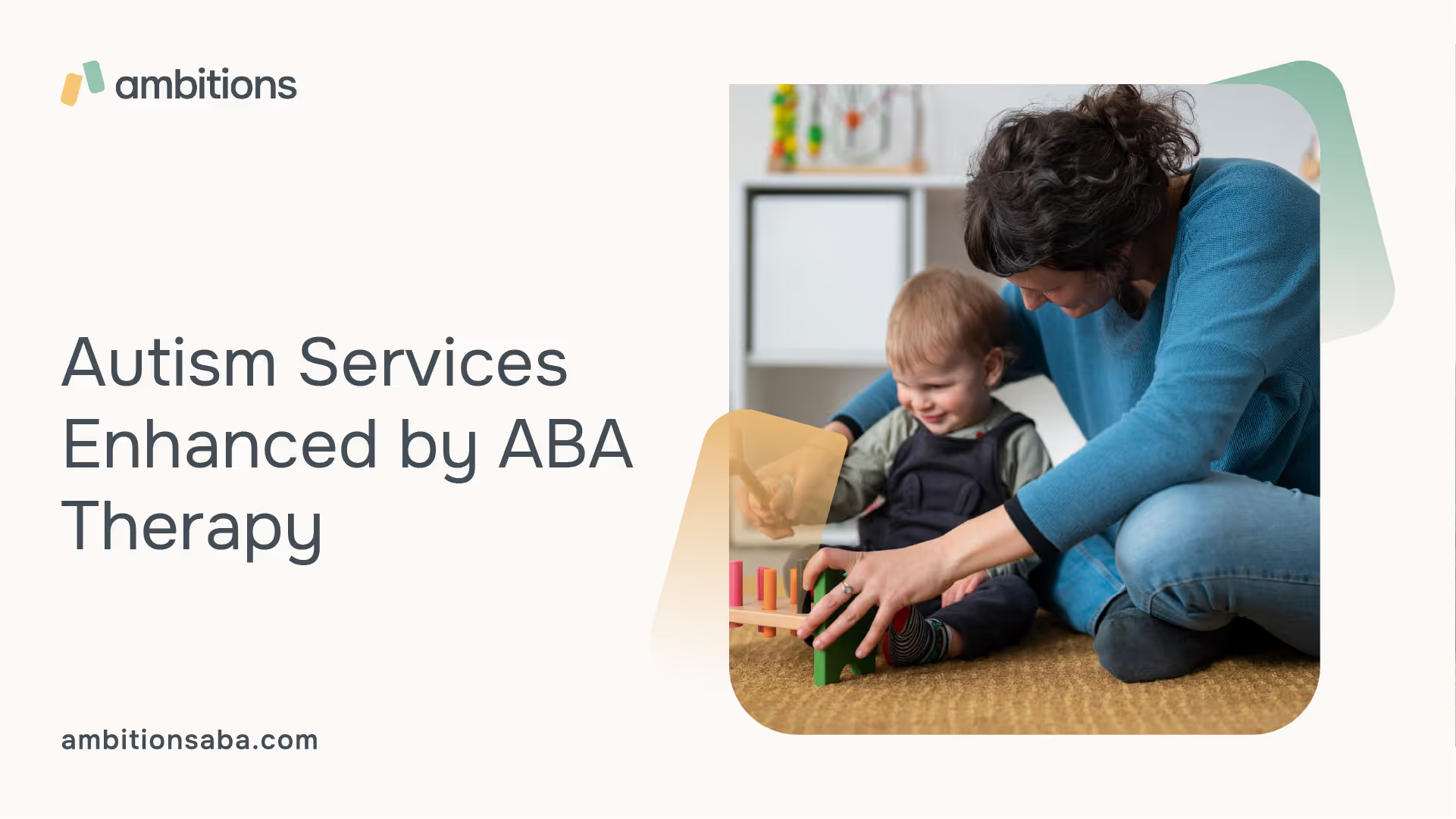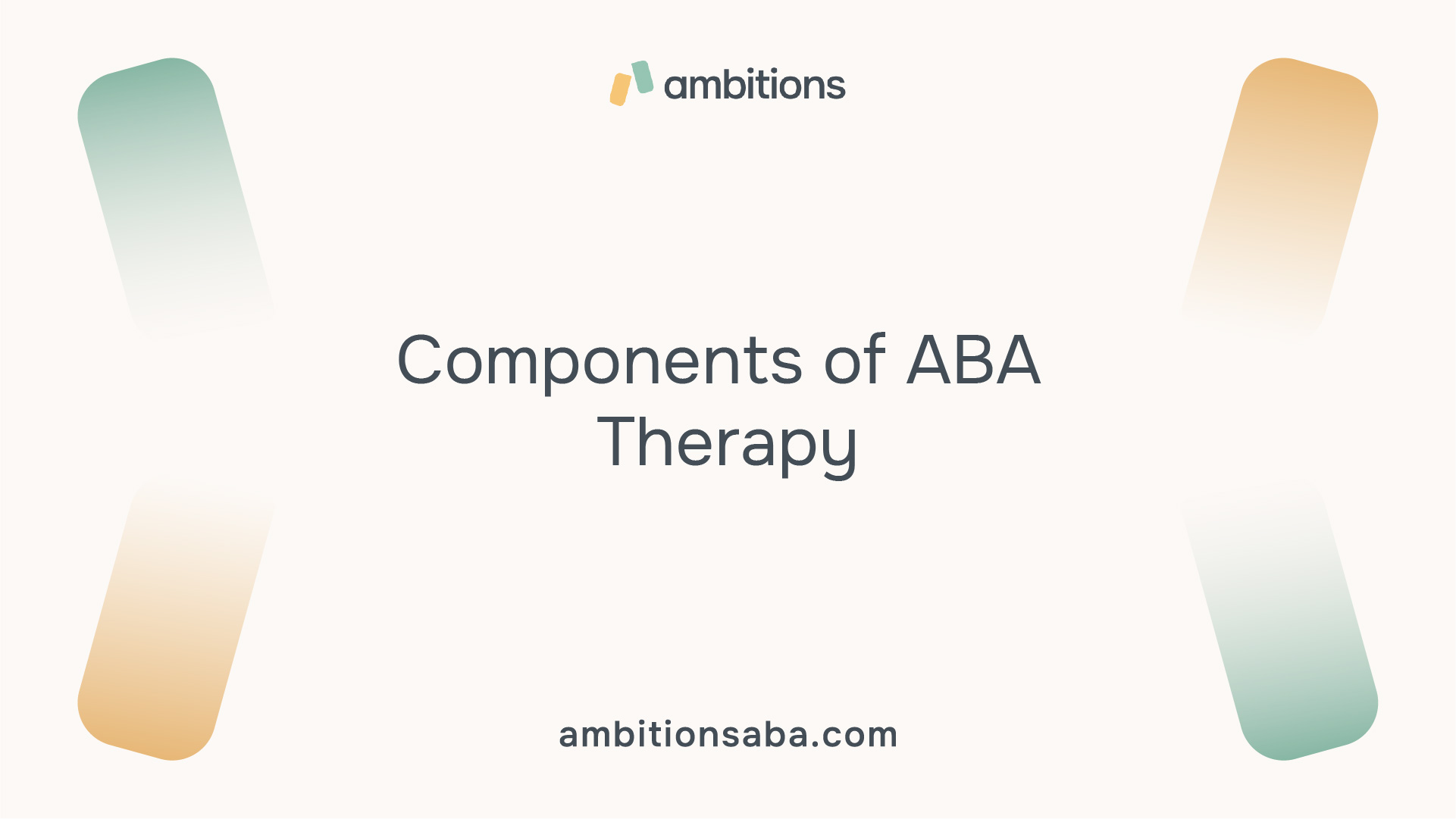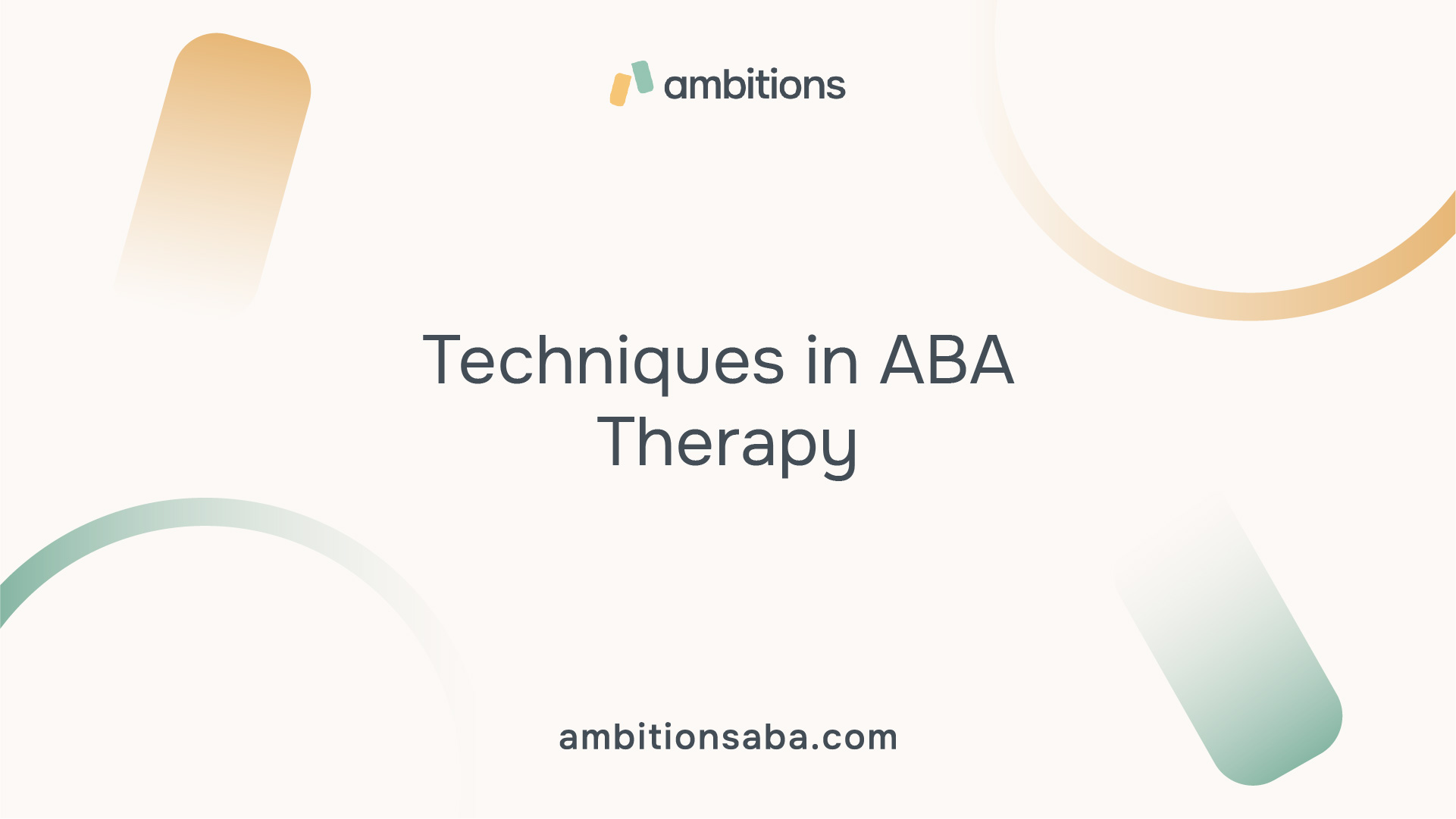Achieving Seamless Transitions from ABA Therapy to Everyday Life
Understanding ABA Therapy
Applied Behavior Analysis (ABA) therapy has been a crucial support system for children with autism since the 1960s. It is grounded in scientific principles aimed at enhancing various aspects of behavior. For parents of children with autism, understanding ABA therapy can help guide their decisions regarding effective interventions and services.

Introduction to ABA Therapy
ABA therapy is a scientific approach designed to help children with autism improve their skills and manage their behaviors. This methodology has gained recognition as an evidence-based best practice treatment, endorsed by both the US Surgeon General and the American Psychological Association. ABA relies on the theories developed by psychologist B.F. Skinner, specifically the principles of operant conditioning, which focus on modifying behaviors based on their consequences.
One key aspect of ABA therapy is its versatility; it can be tailored to meet the individual needs of each child. Techniques within ABA include positive reinforcement, which encourages desirable behaviors by providing rewards or incentives. This can be particularly effective for young children, enabling them to learn vital communication and social interaction skills beneficial throughout their lives [2].
ABA Therapy Effectiveness
Research supports the effectiveness of ABA therapy in achieving meaningful outcomes for children diagnosed with autism. For instance, the UCLA Young Autism Project model demonstrated significant success: 47% of children receiving intensive ABA treatment (40 hours per week over 2-3 years) achieved normal intellectual and educational functioning, compared to only 2% of a control group.
The positive impact of ABA therapy extends to various areas including social skills, communication, and behavioral management. For parents, understanding these effectiveness data can provide reassurance and validate their decision to seek ABA therapy for their children. As they explore options for ABA therapy and autism services, the promise of improved behavior management and skill acquisition may guide them toward making informed choices.
Components of ABA Therapy
In exploring ABA therapy, it is essential to understand the various components that constitute its framework. This includes the distinct roles involved, the foundational principles that guide the therapy, and the evidence-based practices that demonstrate its effectiveness.

Roles in ABA Therapy
In ABA therapy, specific roles are critical for the success of the programs designed for children with autism. One of the primary roles is that of the Board Certified Behavior Analyst (BCBA). The BCBA assesses the individual needs of each child and creates a tailored plan that suits their unique skills and family situations. They are responsible for overseeing the implementation of these plans and making necessary adjustments as needed [4].
Additional roles include direct line therapists who work with children, ensuring that the interventions outlined by the BCBA are effectively put into practice. The involvement of families also plays a significant role, as they are encouraged to participate in sessions and apply techniques at home to enhance learning.
Principles of ABA Therapy
The principles of ABA therapy focus on encouraging positive behaviors while reducing those that may be harmful or disruptive. These principles are rooted in the following key areas:
- Positive Reinforcement: This involves providing a reward or positive stimulus when a desired behavior is exhibited. This technique strengthens the likelihood of that behavior being repeated.
- Data-Driven Decision Making: Continuous measurement and analysis of the child's behavior are critical components. This approach helps in evaluating the child's progress and the effectiveness of the interventions.
- Individualization: ABA practices are customized for each child based on their specific needs, abilities, and preferences [2].
Evidence-Based ABA Practices
ABA therapy is supported by a substantial body of evidence demonstrating its effectiveness as a treatment for autism. It has been recognized as an evidence-based best practice by the US Surgeon General and the American Psychological Association, highlighting its scientific backing [4].
The therapy employs a variety of evidence-based techniques, including:
- Direct Instruction: Structured teaching methods tailored to the learner’s needs.
- Task Analysis: Breaking down complex skills into smaller, manageable steps.
- Functional Behavioral Assessment: Identifying the causes of behaviors to address them effectively.
These practices ensure that ABA therapy not only promotes learning but also helps individuals develop skills that are crucial for social interactions and everyday life. The effectiveness of ABA in dealing with autistic behaviors has solidified its status as a premier approach in ABA therapy and autism services.
Techniques in ABA Therapy
ABA therapy employs a variety of techniques to effectively support children diagnosed with autism. These methods focus on reinforcing desired behaviors, modeling skills, and promoting independence. Below are some key techniques utilized in ABA therapy.

Positive and Negative Reinforcement
One of the foundational techniques in ABA therapy is the use of positive and negative reinforcement. Positive reinforcement involves providing a reward or positive outcome when a desired behavior is displayed. This encourages the child to repeat the behavior in the future.
Conversely, negative reinforcement entails the removal of an unpleasant stimulus when a desired behavior occurs. Consistency in applying these reinforcement strategies is crucial for effectiveness.
Positive Reinforcement:
- Adding a rewarding stimulus
- Giving a sticker for completing a task
Negative Reinforcement:
- Removing an unpleasant stimulus:
- Ending a loud noise when the child completes an assignment
Video Modeling
Video modeling is a technique that can be particularly beneficial for visual learners with autism. This method includes showing children video demonstrations of specific skills or behaviors, which they can then imitate in real-life situations. By visually illustrating the desired behavior, children may find it easier to understand and replicate these actions [5].
- Visual Learning: Helps children who learn better through seeing
- Imitation: Encourages children to mimic behaviors shown in videos
- Skill Acquisition: Aids in learning new skills through clear examples
Prompting and Fading
Prompting and fading is another essential technique in ABA therapy. This approach involves using prompts or cues to guide children in learning new skills, like gently guiding their hands for a task or giving verbal cues to encourage specific actions. The key aspect of this technique is gradually reducing the prompts, which promotes greater independence over time.
- Full Prompt: Providing complete assistance (e.g., hand-over-hand guidance)
- Partial Prompt: Offering just enough support (e.g., giving a hint)
- No Prompt: Allowing the child to complete the task independently
These techniques play a significant role in enhancing the effectiveness of ABA therapy and autism services. By implementing positive and negative reinforcement, utilizing video modeling, and applying the principles of prompting and fading, parents and therapists can work together to support the development of skills in children with autism.
Strategies in ABA Therapy
ABA therapy offers various strategies tailored to meet the unique needs of children diagnosed with autism. These approaches, designed to facilitate learning and promote positive behaviors, are instrumental in enhancing the overall effectiveness of ABA interventions.
Natural Environment Teaching
Natural environment teaching (NET) encourages children to learn in real-life settings instead of simulated environments. This technique aims to help children with autism generalize skills learned across different situations, making it a highly effective method. Through practical applications in natural contexts, children are more likely to retain and apply what they've learned.
The benefits of NET include:
- Real-Life Application: Skills learned can be directly applied in everyday situations
- Improved Generalization: Children can better transfer learned skills to new environments
- Increased Engagement: Learning in a familiar setting often leads to greater motivation and participation
Behavior Contracts
Behavior contracts are effective tools used with slightly older children who are already familiar with positive and negative reinforcement strategies. These contracts outline specific tasks or behaviors, along with the corresponding rewards for successful completion. They hold both the child and their parents or therapists accountable for adhering to the agreement.
The component of behavior contracts includes:
- Goals: Clearly defined objectives for the child
- Rewards: Incentives for achieving the set goals
- Accountability: A mutual commitment between child and caregiver
Antecedent-based Interventions
Antecedent-based interventions (ABI) focus on modifying the environment to reduce the likelihood of triggering unwanted behaviors. This approach aims to help the child concentrate on the intended antecedent of their actions. By understanding the triggers that lead to challenging behaviors, caregivers can create strategies that encourage better responses.
Key elements of ABI include:
- Environment Modifications: Changes to the setting to minimize stressors
- Predictive Strategies: Techniques that prepare children for expected situations
- Supportive Reinforcements: Positive reinforcement for appropriate behavior
These strategies are just a few examples of how ABA therapy can be tailored to support children with autism. By implementing approaches such as natural environment teaching, behavior contracts, and antecedent-based interventions, families can enhance their child’s developmental progress while ensuring a supportive, engaging learning environment.
Benefits of ABA Therapy
ABA therapy offers numerous advantages for children diagnosed with autism. It not only helps them develop essential skills but also enhances the involvement of their families. This section highlights the key benefits of ABA therapy.
Social and Communication Skills
One of the primary benefits of ABA therapy is its ability to improve social and communication skills in children with autism. By utilizing various techniques, ABA therapy helps children learn how to effectively communicate with others, which leads to better social interactions. This therapy provides opportunities for social learning and group interactions, fostering friendships and harmony among peers.
Kids who engage in ABA therapy often find it easier to express their needs and feelings, ultimately enhancing their ability to form meaningful relationships.
Independence and Life Skills
ABA therapy promotes independence in children by encouraging them to perform tasks on their own. Techniques such as Direct Instruction and Natural Environment Training are instrumental in helping children become more self-sufficient. These methods motivate children to engage in independent tasks, fostering confidence and competence.
As children progress, they learn important life skills that contribute to their overall well-being and decreased reliance on caregivers.
- Self-care: Dressing themselves
- Daily routines: Managing time and tasks
- Decision-making: Choosing appropriate actions
Involvement of Families
ABA therapy not only benefits children but also actively involves their families in the treatment process. This collaborative approach empowers parents with tools and knowledge necessary to assist their children. Families play a vital role in reinforcing learned skills in everyday situations, which enhances the efficacy of the therapy.
By including families, ABA therapy ensures a holistic approach to the treatment, ultimately leading to improved outcomes.
- Parent training sessions: Equips parents with tools
- Collaborative goal setting: Aligns family and therapist aims
ABA Therapy Research
Understanding the efficacy of ABA therapy is vital for parents considering this approach for their children diagnosed with autism. Research in this field reveals significant insights about its advantages, challenges, and overall effectiveness.
ABA Therapy Studies
Numerous studies demonstrate that implementing intensive and long-term ABA principles leads to notable improvements in children with autism. Over 20 studies have reported enhancements in areas such as intellectual functioning, language development, daily living skills, and social interactions. A meta-analysis indicated that comprehensive ABA interventions positively influenced language development, daily living skills, and social functioning when initiated early in childhood.
Long-term ABA intervention
- Outcome Measures: Cognitive, language, social/communication, adaptive behavior
- Improvements Observed: Positive medium to large effects
Intensive ABA therapy
- Outcome Measures: Daily living skills and social functioning
- Improvements Observed: Clinically significant adaptive behavior gains
ABA Therapy Success Rates
Despite some challenges, such as high rates of therapy discontinuation and low dosing levels, children who began with lower adaptive levels showed meaningful gains after 24 months of ABA therapy [6]. Improvements were particularly noted across seven of eight evaluated outcomes, including both social and communication skills.
Baseline Adaptive Level: Low
- Success Rate After 24 Months: Clinically significant gains
Baseline Adaptive Level: Average to High
- Success Rate After 24 Months: Moderate improvements
ABA Therapy and Autism Prevalence
Research highlights a pressing need for large-scale studies that compare ABA with non-ABA interventions, focusing on outcomes such as quality of life (QoL) for children with Autism Spectrum Disorders (ASD). These findings can guide policymakers and educators in understanding the impacts of ABA therapy and inform the development of effective ABA therapy and autism treatment programs. By evaluating the nuances of ABA therapy in relation to autism prevalence, more effective strategies can be developed to support children and their families.
For parents interested in comprehensive assistance, exploring available local resources can be beneficial. Check out our sections on ABA therapy and autism resources to learn more about support options.
References
[1]: https://hiddentalentsaba.com/aba-therapy-techniques/
[2]: https://behavioral-innovations.com/autism-101/what-is-aba/
[3]: https://www.ncbi.nlm.nih.gov/pmc/articles/PMC9458805/
[4]: https://www.autismspeaks.org/applied-behavior-analysis
[5]: https://dreambigchildren.com/blog/understanding-aba-techniques-7-strategies-you-need-to-know/

